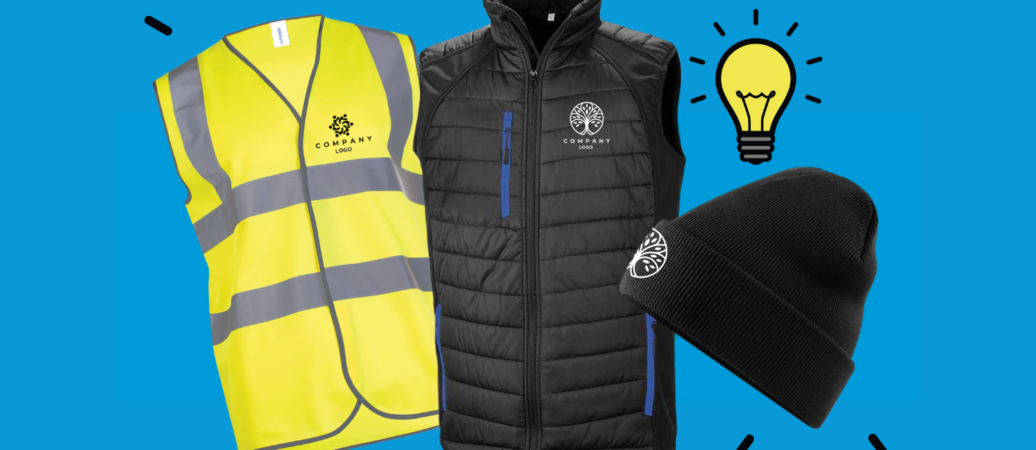How Sustainable Fabric Trends Are Shaping Branded Clothing Collections
How Sustainable Fabric Trends Are Shaping Branded Clothing Collections
Blog Article
The Significance of Lasting Apparel: How It Influences the Atmosphere and Your Closet
Lasting apparel is progressively acknowledged for its essential role in lessening the environmental influence of the fast apparel industry. By focusing on eco-friendly materials and moral manufacturing methods, it attends to pushing ecological issues. This change not just profits the planet yet likewise influences consumer options, causing a much more thoughtful technique to wardrobe monitoring. Comprehending these characteristics elevates important inquiries about style's future and individual duty fit it.
The Ecological Impact of Rapid Fashion

Advantages of Sustainable Materials
Sustainable products offer considerable advantages, specifically via green material options that lessen ecological harm. These products also demonstrate resilience and longevity, decreasing the need for constant replacements. Because of this, they add to an extra sustainable garment industry and promote accountable customer habits.
Eco-Friendly Fabric Selections
While the style industry has long been associated with quick patterns and environmental harm, the rise of green textile choices provides a transformative chance. Sustainable products such as organic cotton, hemp, and Tencel have actually gotten popularity because of their reduced eco-friendly influence. These fabrics are commonly generated without hazardous pesticides and call for much less water, decreasing their carbon impact - Branded Clothing. Additionally, numerous eco-friendly fabrics are biodegradable, adding to a round economic climate by minimizing waste. Selecting lasting products not only supports eco accountable practices but also promotes healthier ecosystems. As customers become extra aware of their purchasing power, the need for environment-friendly materials urges brand names to introduce and adopt more sustainable manufacturing techniques, ultimately benefiting the earth and future generations
Longevity and Durability Benefits
Lots of customers are progressively acknowledging the sturdiness and durability advantages of sustainable products in their garments selections. Unlike traditional materials, lasting materials such as natural cotton, hemp, and recycled polyester are crafted to hold up against damage, leading to garments that last longer. This minimized regularity of replacement not only conserves consumers cash gradually however additionally decreases waste produced by rapid fashion. Additionally, lasting clothes often utilizes environmentally friendly production techniques that improve material stamina, adding to a decrease in the general carbon footprint. By buying resilient apparel, consumers can grow a more sustainable wardrobe while taking pleasure in top quality pieces that preserve their aesthetic and functionality over time. Durability and longevity stand as key advantages of choosing sustainable materials.
Decreasing Waste With Lasting Practices
Reducing waste in the apparel industry can be achieved via innovative techniques such as upcycling and repurposing products. In addition, embracing minimalist closet strategies motivates customers to focus on top quality over amount, eventually reducing garments intake. With each other, these strategies contribute greatly to a more lasting clothing model.
Upcycling and Repurposing Materials
Upcycling and repurposing materials have actually arised as cutting-edge strategies in the garment industry, transforming thrown out fabrics right into useful brand-new items. This method not only decreases waste yet additionally motivates imagination and originality in clothes layout. By taking old garments and materials, developers can develop unique pieces that reflect individual design while decreasing the need for new resources. Additionally, upcycling often needs less power and water compared to traditional manufacturing processes, greatly reducing the environmental impact of style. As consumers come to be much more familiar with sustainability, the popularity of upcycled apparel remains to rise, advertising a round economic climate. Eventually, these methods contribute to a much more sustainable future, where fashion prioritizes environmental health over quick production and intake.

Minimalist Wardrobe Methods
As individuals increasingly seek to reduce their environmental influence, embracing minimal closet approaches has actually gained grip as an effective method to lasting fashion. These strategies emphasize quality over quantity, encouraging customers to curate a smaller sized collection of functional, sturdy apparel. By focusing on timeless items that can be mixed and matched, people can minimize the regularity of purchases and inevitably decrease waste.Additionally, minimalism promotes mindful intake, urging buyers to review the honest and ecological ramifications of their options. This strategy not just fosters an extra sustainable way of living yet also streamlines daily decision-making pertaining to clothes. As individuals accept minimal principles, they add to a style culture that values sustainability and liable consumerism, inevitably causing an extra eco-conscious society.
The Function of Honest Labor in Sustainable Fashion
While lots of consumers are increasingly knowledgeable about the ecological repercussions of their clothes options, the importance of moral labor methods in lasting fashion can not be ignored. Honest labor incorporates reasonable earnings, secure working problems, and regard for workers' rights, creating the foundation of accountable fashion manufacturing. Brands that prioritize moral labor not only uplift areas yet also set a requirement for accountability in the industry.Moreover, the integration of honest methods fosters transparency, enabling customers to make enlightened options about their acquisitions. This method contrasts dramatically with rapid style's exploitative labor models, which typically prioritize revenue over individuals. By supporting firms dedicated to moral labor, consumers add to a system that values human self-respect alongside ecological sustainability. Subsequently, honest labor is not merely an add-on; it is important to the more comprehensive objective of lasting style, making sure that the mission for eco-friendliness does not come with the expense of human rights.
The Effect of Sustainable Garments on Carbon Emissions
Lasting clothes has the potential to greatly lower carbon exhausts connected with the garment industry. Standard garment production adds especially to greenhouse gas discharges, mostly because of energy-intensive manufacturing procedures and using non-renewable sources. In comparison, lasting fashion concentrates on green products, such as here natural cotton or recycled fibers, which commonly require much less energy to produce.Moreover, lasting brand names tend to adopt more reliable production methods, minimizing waste and decreasing general discharges. By focusing on resilience and ageless style, lasting apparel encourages consumers to purchase less regularly, additional decreasing the carbon impact related to overconsumption.Additionally, several lasting brand names are dedicated to transparency in their supply chains, making it possible for consumers to make informed options that line up with their values. Eventually, shifting in the direction of sustainable clothing can result in a substantial reduction in carbon discharges, adding to a healthier planet and a much more lasting future for the apparel industry.
Supporting Regional Economies With Lasting Selections
The shift towards lasting apparel not only addresses ecological issues however additionally considerably advantages neighborhood economic situations. By picking lasting fashion, consumers commonly sustain local artisans and local business, boosting community resilience. These enterprises normally run on a smaller range, focusing on craftsmanship and ethical techniques over mass production.Investing in locally made sustainable clothing cultivates job production and boosts financial development within areas. As customers end up being more conscious of the environmental influence of their acquisitions, they increasingly seek out items that show their worths. This need encourages neighborhood manufacturers to take on lasting methods, adding to a circular economy.Moreover, sustaining local businesses lowers transportation emissions, aligning with eco-conscious consumer actions. The interconnectedness of sustainable apparel and regional economies emphasizes the important duty that individual choices play in promoting both financial and environmental health. By promoting these regional connections, communities can prosper while likewise working towards a much more lasting future.
Transforming Your Closet: Tips for a Sustainable Closet
As people look for to decrease their environmental impact, changing a wardrobe into a lasting wardrobe becomes a vital step. One efficient technique is to assess existing garments, keeping only products that are used regularly and that straighten with sustainability goals. Prioritizing quality over amount is essential; purchasing resilient pieces from eco-friendly brands can substantially lower waste.Additionally, incorporating pre-owned products can take a breath brand-new life right into a wardrobe while minimizing ecological damage. Organizing clothes swaps with friends or contributing extra products can further advertise sustainability.When shopping, people must look for products that are organic, recycled, or biodegradable, and avoid rapid fashion merchants - Branded Clothing. Lastly, exercising conscious consumption by thoughtfully thinking about each purchase can add to a more sustainable way of living. By implementing these ideas, one can develop a closet that reflects individual design while supporting environmental stewardship
Often Asked Concerns
How Can I Recognize Lasting Apparel Brands?
To identify sustainable clothing brand names, one must research materials used, check for qualifications like Fair Trade, and check out the brand name's transparency about their manufacturing processes, labor practices, and ecological effect, ensuring honest and environment-friendly methods go are focused on.
What Are the Expenses Linked With Sustainable Fashion?
The costs associated with lasting style can vary considerably. Higher production expenses, honest sourcing, and environmentally friendly products typically cause enhanced retail rates, which may hinder some consumers while appealing to environmentally mindful buyers.
Can Sustainable Garments Be Fashionable and Trendy?
Lasting garments can undoubtedly be stylish and fashionable. Designers progressively prioritize cutting-edge products and honest production methods, verifying that style and sustainability can exist together. Consumers currently have diverse options that blend aesthetics with ecological consciousness.
Just How Does Washing Clothes Affect Their Sustainability?
Cleaning clothing significantly impacts sustainability by consuming water and power, adding to pollution, and triggering microplastic launch. Frequent cleaning can weaken materials, shortening their life expectancy and boosting the need for replacements, eventually aggravating ecological concerns.
What Is the Lifespan of Lasting Clothing Contrasted to Fast Fashion?
The life expectancy of sustainable clothing generally surpasses that of rapid style products, frequently enduring several years as a result of top quality products and workmanship. On the other hand, fast fashion garments might weaken rapidly, requiring more constant replacements. Lasting garments is progressively identified for its essential duty in lessening the environmental influence of the rapid fashion industry. While many consumers are significantly conscious of the environmental consequences of their garments options, the importance of ethical labor techniques in lasting fashion can not be forgotten. Branded Clothing. Lasting garments has the prospective to greatly minimize carbon emissions associated with the fashion sector. In comparison, sustainable fashion concentrates on green materials, such as natural cotton or recycled fibers, which frequently need less power to find out here produce.Moreover, sustainable brands have a tendency to adopt extra effective manufacturing methods, minimizing waste and decreasing total discharges. By prioritizing sturdiness and classic design, lasting apparel motivates customers to acquire less often, further lowering the carbon footprint linked with overconsumption.Additionally, lots of sustainable brand names are devoted to transparency in their supply chains, enabling consumers to make informed choices that align with their values
Report this page